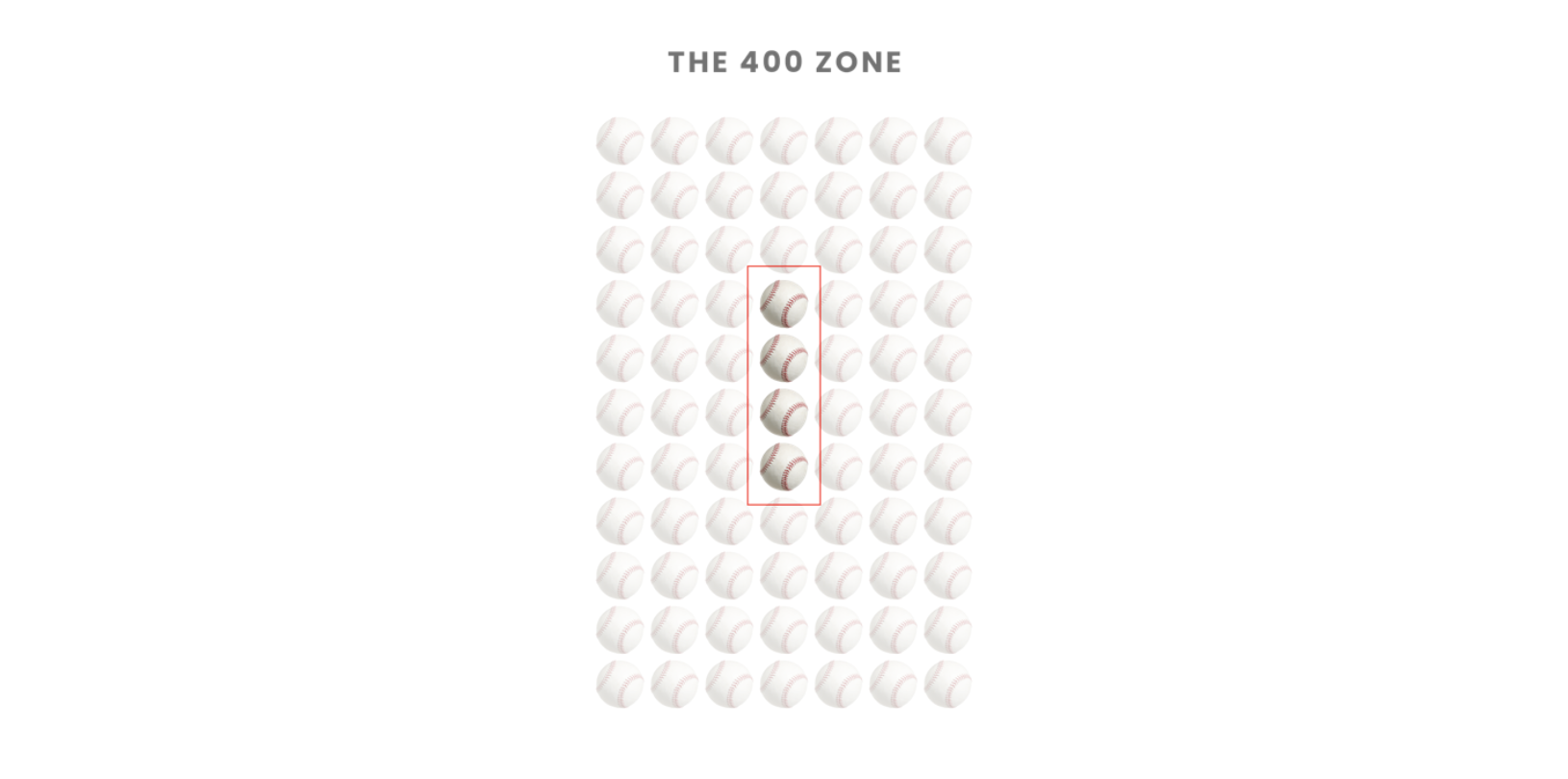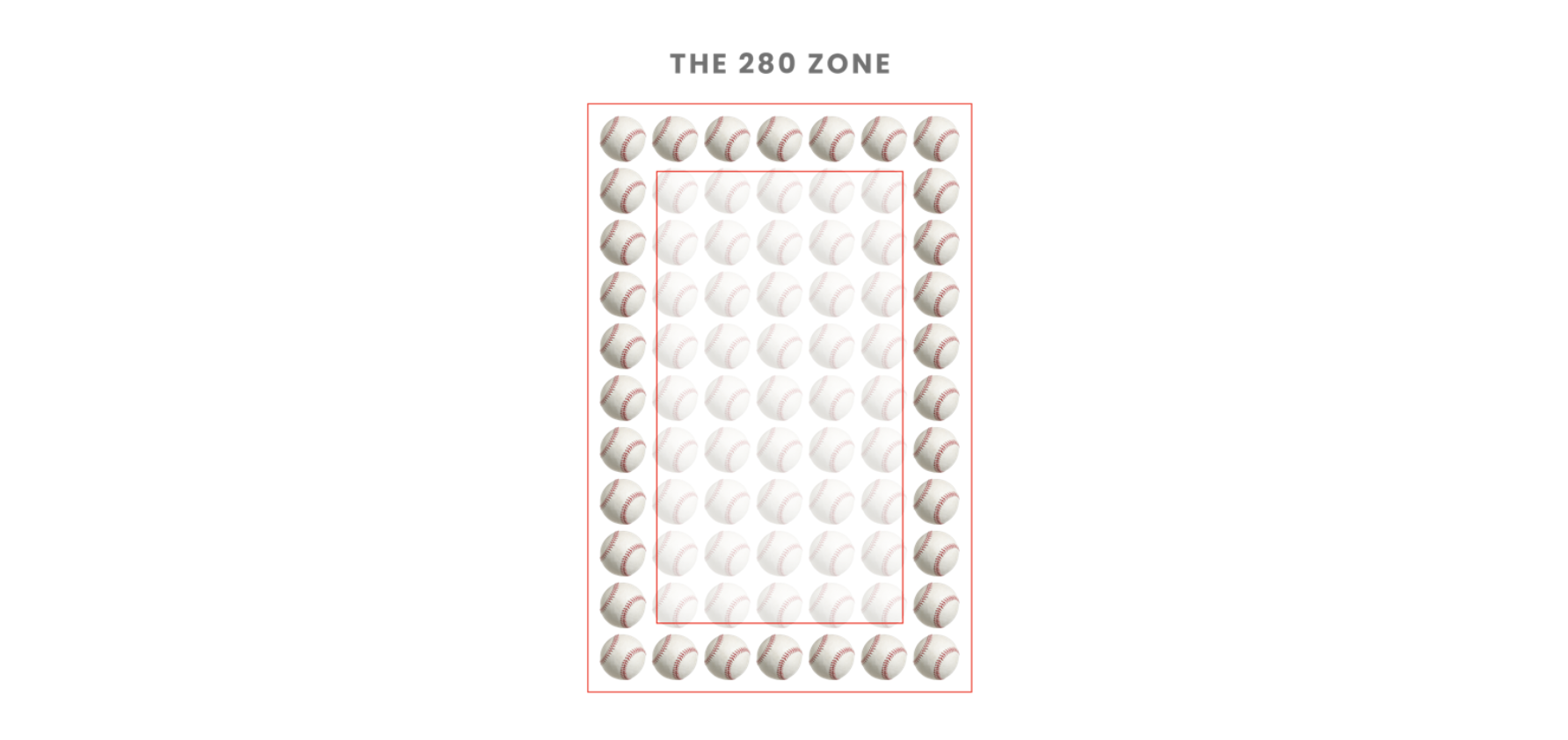Ted Williams on Marketing
Here at Saatva, we spend over $100 million on advertising. That means a lot of companies and agencies want to help us. That desire to help attracts some of the most interesting and intelligent people I’ve ever met to my office.
Many of those people work at my company.
My inbox and Slack are filled with good ideas that can drive profit, reduce costs, or help us in some way.
Too many. It is impossible to do them all. It’s probably foolish to try.
Coached to say “no.”
As a kid, all I wanted to be when I grew up was a professional baseball player. Knowing this, on my 13th birthday, my mother gave me “The Science of Hitting” by Ted Williams. (I was reminded of the book when I stumbled upon this video of Warren Buffett referencing it as a guide to investing.)
Ted was the last major league baseball player to hit over .400 for a season. When asked how he wanted to be remembered, Ted told people, “When I walk down the street, I want people to say, ‘There goes Ted Williams, the greatest hitter who ever lived.’” That is a fabulous, singular focus. Ted didn’t want to be a “good” hitter or a “successful” hitter. He wanted to be the best hitter who ever lived.
In his book, Ted breaks down the strike zone using 77 baseballs. Every one of those pitches represents a strike—or, to a CMO like me, a profitable idea.

Anyone who’s played little league baseball has been conditioned, on some level, to believe they should swing at EVERY pitch in that 77 zone. “Swing at strikes!” we’re taught by well-intentioned Little League coaches and parents.
Ted knew there were only four pitches in that zone that would get him to his goal.

He also knew that every time he swung at a pitch at the outer margins— still strikes—his probability of getting a hit dropped to .280—a 30% decrease from .400. Every swing in that zone took him further from his goal.

That’s 32 pitches Ted Williams wouldn’t even consider.
The greatest offense you can make as a batter is to be called out on strikes. Fortunately, marketers don’t have to swing at every pitch. There is no such thing as a 2-strike count in marketing. “No” is always an option, and, if Ted is any indication, it’s the best option 73 out of 77 times.
If you are a hitter or marketer who aspires to be the best, you have to be willing to listen to 77 ideas and move forward with, perhaps, only 3 or 4.
Saying “no” has consequences
Nobody, especially smart people who have achieved senior roles, wants to be told, “No.” As a decision maker, others will sometimes regard you as foolish, inexperienced, risk-averse, obstinate, closed-minded, “stuck in your ways,” or simply an A**hole when you say “no.”
It’s especially difficult when you like and respect the person sitting across your desk; when you’re certain they believe in what they propose, and that they want only what is best for you. The difficulty is compounded when you are provided with case studies of other brands that have found success with whatever is being pitched to you.
What’s a CMO to do?
My sweet spot
I’ve been at Saatva for eight years. Over that time, we’ve spent hundreds of millions and taken millions of swings at the plate. We know our sweet spots.
Imagine that my sweet spot is Meta. It’s not, but for the sake of this example, imagine it is. I know that I can write a check to Meta, run a remarketing campaign targeted at people who abandoned one of our product pages, and get $6 back for every dollar I invest.
My goal for marketing overall is to generate $4 for every dollar invested. I could stop investing in Meta and maximize my profit percentage, but if each marginal dollar I invest generates $6, I can increase my revenue and profit in absolute terms by continuing to spend there until ROAS lowers to 4.
Here’s where it gets even more interesting. As far as all my various measurement partners tell me, I am far from diminishing returns on Meta. Chances are, if I spend more there, that $6 has an equal likelihood of growing. Any money I divert from Meta right now might preserve a high profit return, but it damages my business. I might top out at a 7 or 8 ROAS before I see any sign of diminishing returns. And even after diminishing returns, because it’s my top performer, I’d be foolish if I did not continue to lean into Meta.
Should I focus on our sweet spot to the exclusion of everything else?
No.
I’d be equally foolish to focus only on Meta. My remarketing campaign would not work if Saatva hadn’t invested in a site for people to abandon. TV drives consumers to search for us and then visit our site. Email is also a highly effective and inexpensive way to remarket to site visitors. While Meta may be our top performer, it dies if I don’t do other things that are designed to fuel its fire.
But I don’t want to be distracted by too many things that take my team’s time, attention, and focus away from our sweet spot. Any agency that takes the time to understand my business, to understand our sweet spot, will do well to help me and my team understand how their offering complements our strengths.
What’s an agency or person with an idea to do?
Get to know us and what works for us.
If I can’t draw a line from your idea to my sweet spot, I may listen politely, but you’ll never have my full attention. If you want to gain traction with me and my team, you have to spend less time telling me about you and your success and more time understanding Saatva and our success. I understand that some brands aren’t really sure what is best for them, or where they should lean in. Those CMOs should be testing and learning, and identifying their sweet spots. We’re in a different place.
Make it eas(ier)
If my team has to spend time setting up geo hold out tests to prove your idea will work for us; if I can’t measure the results accurately; if I have to rely upon you to grade your homework; if I have to spend time and money to produce new creative assets; if investing in you reduces my ability to invest in Meta—all of those things are more difficult and time consuming than adding another zero to the check that I write to Meta.
You might call me lazy. I’m ok with that. Working harder to make less money is stupid, and I’d rather be lazy than stupid.
Wow. That still makes me sound bad. Let’s say I’d rather be “well rested” than stupid. That’s on brand for a mattress marketer.
Introduce me to your friends
Showing me a logo on a capabilities deck and telling me that X Brand generated 12% incremental revenue is less valuable to me than hearing it directly from X Brand’s CMO. That way, I can listen and learn from them. Perhaps they’ve already done the geo-targeted incrementality studies. Perhaps they’d be willing to share what their MMM says about your idea. I’d like to better understand their sweet spots and determine for myself if your idea is relevant to me.
Plan for your moment
Things change as our company moves along its life cycle. Our “sweet spot” seven years ago was different from our sweet spot 4 years ago was different from our sweet spot today. At some point, I’ll reach diminishing returns on the combination of meta, search, and email. Out of Home, Events, in-flight advertising, or court-side signage might become just the thing for us.
One thing is certain. If you listen, learn, and understand my business, I am unlikely to forget about you or your ideas. There’s a much better chance we’ll work together, someday, if not today.
While we are more likely to say no, we’re always listening for the idea that makes us say, ‘Hell yes.’”
